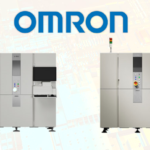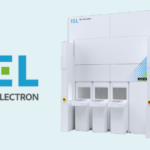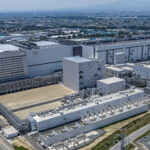ASIA ELECTRONICS INDUSTRYYOUR WINDOW TO SMART MANUFACTURING
New Singapore Facility to Boost Micron’s HBM Grit
Micron Technology, Inc. has recently broken the ground on a new High-Bandwidth Memory (HBM) advanced packaging facility. Specifically, the planned facility is adjacent to the company’s current facilities in Singapore.
The new HBM advanced packaging facility will be the first facility of its kind in Singapore. Operations for the new facility will likely begin in 2026. Moreover, Micron will also extend its total advanced packaging capacity beginning in calendar 2027 to meet the demands of AI growth.
Most importantly, the facility groundbreaking will further strengthen Singapore’s local semiconductor ecosystem and innovation.

Importance of High Bandwidth Memory
According to IEEE, High Bandwidth Memory (HBM) refers to a type of computer memory architecture that utilizes a 3D stacking technology. For that reason, it enables to achieve significantly higher bandwidth compared to traditional DRAM for high-performance computing applications like graphics processing, networking, and artificial intelligence. Specifically, these applications have large amounts of data need to be accessed rapidly while maintaining low power consumption. Moreover, its implementation often requires through-silicon vias (TSVs) to connect stacked memory dies to a base logic die.
HBM chips are gaining popularity due to the rise of generative artificial intelligence (Gen AI). Accordingly, HBM chips have larger storage space that complements the requirement of AI applications.
AI applications have become even more complex and for that reason requires more advanced computing to ensure applications’ smooth running without delays. Thus, HBM process are becoming indispensable to running increasingly popular AI applications.
More Investments, More Jobs
Sanjay Mehrotra, president and CEO of Micron said the demand for advanced memory and storage solutions will continue to increase as AI adoption proliferates.
“As AI adoption proliferates across industries, the demand for advanced memory and storage solutions will continue to increase robustly.” In addition, Mehrotra said, “With the continued support of the Singapore government, our investment in this HBM advanced packaging facility strengthens our position to address the expanding AI opportunities ahead.”
Micron’s HBM advanced packaging investment of approximately US $7 billion (SG$9.5 billion) through the end of the decade and beyond will initially create around 1,400 jobs, with site expansion plans to reach an estimated 3,000 jobs in the future. These new roles will include functions such as packaging development, assembly and test operations.
In a statement, Png Cheong Boon, Chairman of the Singapore Economic Development Board, said Micron’s investments reflect its confidence in Singapore’s competitiveness as a critical node in the global semiconductor supply chain. In fact, Micron’s invesmtnet is Singapore’s first high-bandwidth memory advanced packaging facility. “(This) allows us to contribute to global AI growth. It expands Singapore’s partnership with Micron and further strengthens the semiconductor ecosystem in Singapore,” said Cheong Boon.
Micron’s future expansion plans in Singapore will also support long-term manufacturing requirements for NAND. Moreover, Micron will maintain flexibility in managing the pace of capacity ramps in both the HBM and NAND facilities to align with market demand.
Micron’s current facility in Singapore is the first front-end semiconductor fab in the world to be recognized as the Advanced Fourth Industrial Revolution Lighthouse and Sustainability Lighthouse by the World Economic Forum. The new HBM advanced packaging facility will be built in alignment with Micron’s sustainability commitments. It will feature technologies such as a greenhouse gas abatement, water recycling and waste circularity (reduce, reuse, recycle, recover). The new building will be highly automated through AI-based intelligent solutions and designed to meet the Leadership in Energy and Environmental Design (LEED) certification requirements.
31 January 2025




